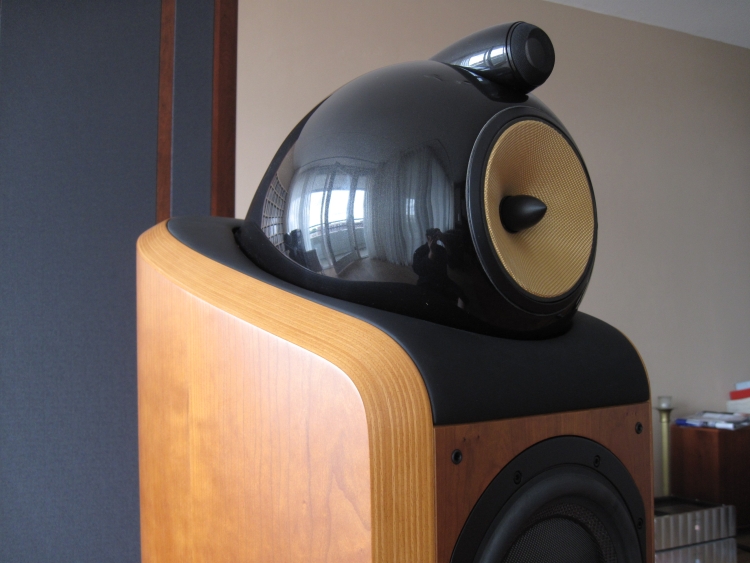
The iconic 800D is compared to its smaller brother Nautilus 804, the Magnepan MG3.6R, and the Synthese Floating 2
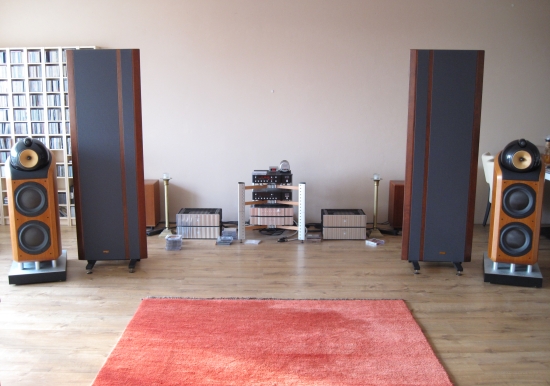
Above: placed on the outside of the Magnepans that are at this time still in their ideal positions, the 800D’s look nice, but this is far from the optimal placement for the 800D’s. Although the 800D’s need to be positioned carefully if you want to hear them at their best. Too far apart and the bass is thin and imaging is vague. Too close to each other and the bass is overwhelming. Too far from the listening seat and focus suffers. Too close and the midrange starts to sound forward. It seems that the 800D’s are much more fussy than the 802D’s. The lattter will simply start to sound overly sweet or voluptuous when placed incorrectly, but then, the 802D’s don’t have the transparency or coherence that the 800D’s are capable of either.
Intro
I bought these magnificent speakers in an attempt to find more manageable replacements for my Magnepan MG3.6 magnetostatics. Indeed, you couldn’t have two speakers that are more different. Still, it was my desire to have more aestetically pleasing speakers in the listening room, even if that meant having two 125 kilo heavy behemoths in the middle of the room. The Magnepans are nice enough to look at from the listening position but from the sides and rear they are less pleasing. This is because they are slightly curved and also leaning forward. This slight tilting turned out to be important for the imaging and better balances several aspects of the sound. They also have to stand way into the room. All in the name of good sound, right? Well, I thought I’d undertake an effort to find other speakers, also because the Magnepans, great though they are, are not exactly bass monsters. The 800D’s are. So there you have it, my reasons for trying the 800D: aestetics and bass. Wwhen I stumbled upon a great second hand deal, I jumped on it.
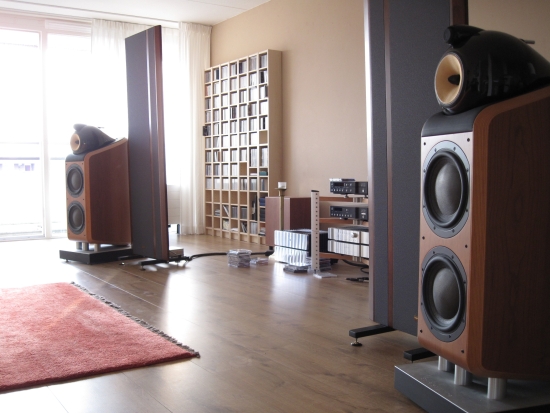
Above: the Magnepans in their optimal position. Notice that they lean forward slightly? That’s how they sound best to me, but it looks odd from the side indeed. By contrast, the 800D’s are more like expensive jewelry/posh furniture, no matter what angle you look at them. Their position as shown on the picture however was far from their ideal position. The final position was much closer to the listener, in fact very close to the carpet, a good 2 meters from the rear wall.
So, here goes…
Before I start rambling about the sound, I want to put up a small disclaimer. Rooms and their acoustic behavior make up half of the sound, if not more. In all but the most perfect rooms, you are listening to a mixture of direct speaker sound and your room, reacting to the speakers. My room is far from perfect and frequently causes problems for dynamic speakers. Therefore, my experiences are likely not typical of results obtained in other rooms. I should also mention that Magnetostatics react very differently due to their bipolar design. They do not excite room modes as much and also are more focused over a longer distance. While the Magnepans are at an advantage because of their dipole characteristics, the 800D’s are also compared to the smaller Nautilus 804’s as well as to the Synthese Floating 2’s. So, At the very least, my results should provide some food for thought.
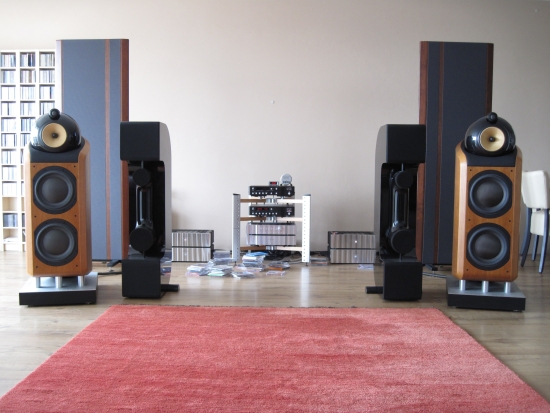
Above: this was the final position for the 800D’s: closer together as well as closer to the listening position. The Magnepans have been moved out of the way and close to the rear wall. The Synthese Floating 2’s were only in position when they were compared to the 800D’s. During the critical part of the listening the 800D’s were free-standing.
Fun side-note: the B&W’s tweeter enclosures are often seen as microphones by non-audiophiles while the Syntheses are believed to be telephones!
Diamonds are a boy’s best friend, too?
Let’s start with the most important aspect of the 800D’s: the D for Diamond. This tweeter is actually made from diamond. Not in the sense that it’s facetted, glitters brightly and makes women want to put it on their fingers, because it looks nothing like diamond. It’s matt and frosted and is synthetic but technically speaking a diamond nevertheless. I don’t fully understand how it is made but from what I gather they take graphite and make it vapourize under immense pressure, thereby emulating the natural pressurization that normally occurs over thousands of years. It was my hope that the diamond tweeter at least would be a match for the stunning pure ribbon tweeter in the Magnepans. After all, I had had the B&W 802D’s years ago and found them ever so sweet in the treble, more than a match for the Nautilus 804’s at the time. But the 802S’s were also way too bass-rich and had a very warm and slightly closed-in midrange. They sounded a bit like the loudness button was always on. I couldn’t live with them and moved on to Martin Logan electrostatics, that, of course, have their own issues. Anyway, from memory, the diamond on the 800D sounds very different from the one on the 802D. This one seems much cleaner and dynamic, more articulate but also darker in balance. But then, I am spoilt with the Magnepan’s ribbon, which, in all fairness, perhaps has a little bit too much treble energy, but is never edgy or hard.
But even compared to the Nautilus 804 with its aluminum tweeters, the 802D is decidedly dark in balance. What’s more, the N804 always amazed me with its treble spread. Even behind the speaker there would be plenty of treble energy and this was what makes them so easy to live with: anywhere in the room where I choose to listen to music, it sounded fine. Not so with the 800D’s tweeter. This one seems to be extremely focused and strongly bundled. While it already seems to be on the dark side when in the perfect listening position, the treble really drops off alarmingly if you move out of the comfort zone. It is almost like listening to Martin Logans: there really is only one perfect listening spot and it is 1,5 seats wide. Move to the side of the couch, listening only slightly off-axis and already the balance tips so much to the dark that it almost becomes unlistenable.
Different tube?
Even though the microphone-shaped tweeter enclosure of the N804’s is very similar to that of the 800D, there is something different going on on the inside. When you put your ear behind the N804’s treble tube, you can clearly hear treble coming out. Not so with the 800D’s treble tube: out comes absolutely nothing! So, it looks like its tube is highly damped or the treble energy is otherwise contained, while the N804’s tube seems to be entirely open. But I’m getting ahead of myself with the N804 comparisons. There’s more on this further below.
The 800D’s treble can be hard and unforgiving at times, yet smooth, fluid and subtle at other times. It is, in a word, super-honest. Never artificially, intentionally brittle as an add-on effect but also not really forgiving of badly recorded music. Well-recorded CD’s, especially music with acoustical instruments, can sound absolutely spectacular, very “live”, very dynamic and extremely engaging. But badly recorded CD’s will sound very bad indeed, even worse than on the Magnepans, which are much more forgiving in the treble. But as I found out, the treble isn’t the 800D’s only super-analytical element.
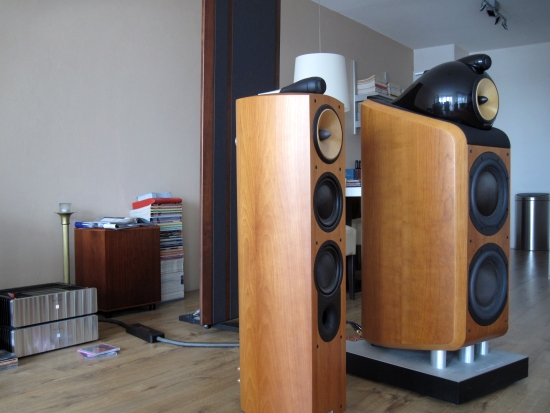
The familiar yellow FST Midrange
I have owned various B&W speakers and have heard even more of them at shows. Always has that FST unit been in place, even on the oldest B&W’s I heard. It has become their trademark. And I have always found much in favor of this driver. It has the ability to convey emotion in a way that not many midrange drivers can. It can sound very lively and direct-coupled while also posessing body and color. The sound of the FST varies, depending on the speaker that it is used in. For example, in the N804 it can be slightly forward and nasal while on the 802D it can be too smooth, too laidback and muffled. I would say that the 800D’s incarnation is almost spot on. The midrange of this speaker is very open and very neutral. There’s no nasality or chestiness and neither is it woolly or muffled. But I find the FST unit getting a bit long in the tooth. It may have very low coloration and the Marlan enclosure may well be highly sophisticated and lacking woodiness, but there’s always a recognizable signature to its sound, something that does sound like chestiness (even though it is not, how could it be/), no matter what incarnation is used. But this is a mild complaint, something you only notice when you have lived with Nautili and their offspring for a long, long time. Other than that, the midrange is very well-executed, and may well be the best part of this speaker. It is the Marlan enclosure and the FST unit in it, that makes for a super-wide soundstage that can really float around the speakers. These big beasts can really totally disappear, with the music being all around you and filling the room. Imaging is first rate, both focus and depth. In fact, they image deeper than the Magnepans do. The sound can really be very 3D. Can be? Yes, because, like the treble, this is very much dependent on the quality of the recording that is being played. Of course, that’s only fair and that goes for many, if not all speakers. But there’s something else. Again, the 800D is so very neutral, so honest also in the midrange, that more often than not I have to conclude that the recording is flawed. With the Magnepans I can play almost all (let’s say 75%) CD’s with good results. With the 800D’s, this goes down to less than half my collection.
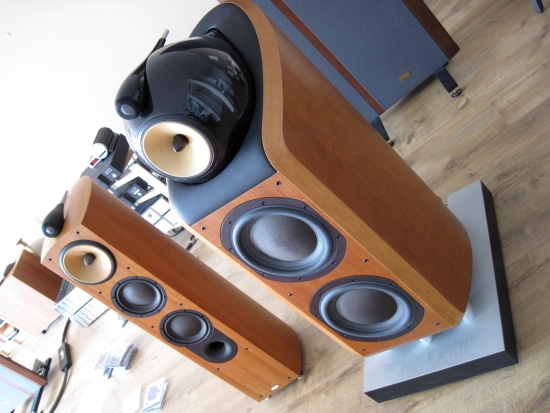
Above: how cute the 804’s look next to their big brothers!
Bass
Of course you don’t buy these big beasts if you’re not into bass. I’ll say it right now: I like bass. I like it deep and I like it strong. But I definitely don’t like it vague, unrhythmic or ill-defined and one-note-like. I don’t mind bass-heaviness but it has to be good bass. Well, the 800D doesn’t let down. Actually, it may well have the best bass of all models in the 800 series, past and present. The bass is well-integrated, not like with the 802D where it was too thick and too slow. The 800D can really give you the illusion of listening to a small two-way monitor speaker. It is fast, articulate, dynamic, punchy and, not to forget, DEEP! It really is incredible how deep these speakers reach. The bass is always solid and feels very physical. But, unlike with the 802D’s, there is no bass when it is not on the CD. It’s not like there is always a constant rumbling down below, the 800D’s bass is simply faithful to the recording. This aspect of the 800D makes me want them most. If you want good bass, there is simply no substitute for a big cabinet and big drivers and the Magnepans simply fail in this aspect. That is why I have two Rel Strata subwoofers but even with their help, the bass never sounds as full, dynamic and as formidable as with the 800D’s on their own, and definitelty not as well-integrated. And this is with Jeff Rowland model 6 amplification. These are very good amps that have plenty of current in reserve, but they are hardly bass champs. I suspect that if you connect a big McIntosh or Bryston, the bass will really rock!
Overall
Sometimes these speakers amaze me by sounding totally convincing. Other times, they sound thin, flat and plain uninspiring. They perform at their best with real music, acoustical instruments and voices. Blues and jazz can be stunning. Electronic music fares less well: it quickly sounds electronic as well. Smooth jazz often isn’t smooth on the 800D’s. Often times, with less well recorded CD’s, these speakers sound nothing like their hefty price tag presumes. Of course you could argue that the source is to blame. Garbage in, garbage out, right? Well, I can’t disagree, but I listen to music for my enjoyment. Not to be punished for having purchased mediocre CD’s. I guess that this is the price you pay for having state of the art monitors. After all, that’s what their legacy is: studio monitors. One of the most important factors was for them to be able to play really loud while having vanishingly low distortion and it certainly seems that goal has been achieved. My initial listening was with Transparent cabling allround. The speaker cables are Transparent Reference XL’s and while they aren’t mushy or overly smooth, they are very subtle and forgiving in nature. But even with these cables the speakers sounded quite analytical. I swapped to Cardas Golden Reference but that was too much to the other side and it resulted in sloppy, slow bass and less articulation in the lower midrange. As a whole, these are certainly among the best speakers I have heard but they are a bit too fussy for me. Also, I strongly feel that they perform optimally in my room (Update 19-12-2019 – this is now confirmed and the room works much better with the speakers and listening position rotated by 180 degrees). To further test this, and to make this review more meaningful, I compared the 800D’s to a few other speakers.
Compared to Nautilus 804
A comparison was easy to make since the 804’s are permanently set up in the cinema room. Immediately after connecting them it was evident that the 802D indeed has a dark balance. There are people who find the N804’s treble brittle or hard. I strongly feel that this is nonsense. These people may have heard new, non-run-in speakers, mated them with non-synergistical equipment or maybe they were used to sweeter sounding soft domed speakers. But the Nautilus tweeters are certainly never harsh or brittle. This was again evidenced when comparing them to the Diamond tweeters. The N804 was both more open and airy but also a lot more fluid and gentle. The Diamond could be said to be more accurate and more dynamic but it was also more ruthless. The Nautilus tweeter by comparison was closer to the Magnepan’s ribbons. of course the latter are even airier and open but still, I very much like the Nautilus tweeter. So, have B&W gone too far? Have they traded musicality for accuracy? I have also had the 802D’s in the past, and their tweeters, if memory serves, were very fluid and in fact sounded less like typical tweeters than those of the N804’s. They simply made music and never made themselves known. So what changed in the 800D? Perhaps a combination of the filter components, lower tolerances and maybe the conscious decision to make the 800 a more honest speaker. But I digress. The N804 not only sounded airier and more subtle, but it was also more engaging overall as if it was completely run-in and the 800D came fresh out of the box. But these 800D’s were already 6 years old when I bought them. They may have been out of duty for some time while the previous owner enjoyed his new speakers but still, I made sure that I shook them loose (poor neighbors) and listened to lots of music over the course of two weeks before starting on this review. Of course the N804 had less bass, but it coped well, and in some ways, its bass was even more tuneful. When combined with the Rel subs, the 804’s could really shine. This was a sound that I could live with if I didn’t have Magnepans. With the enormous price difference in mind, the case for the 800D’s seemed to weaken. But the midrange was where the N804’s were really outperformed by the 800D’s. While the 800D’s had an immensely wide and deep soundstage and managed to image completely free from its enclosure, the N804’s were narrow and 2D in comparison. And that, while the 804’s were already very spacious compared to many other speakers! This only goes to illustrate that the 800D’s are really special in that respect.
Compared to Magnepan MG3.6R
The Magnepans are a tough act to follow for any dynamic speaker. Even for 800D’s as it turns out. Again, my room is also to blame but the Maggies just sound more detailed, are more open, faster, and more articulate. Their treble is so much more open and delicate that the 800D’s treble sounds dull and muffled in comparison. The Magnepans also manage to do this while avoiding being too clinical. In fact, their treble is much more smooth and fluid than that of the 800D. As said, the Maggies may well have too much treble energy in absolute terms but even so, the quality of the treble is apparently difficult for regular tweeters (diamond or not) to follow. The Maggies’ midrange however is less stellar than their treble in that it possesses a slight analytical quality and can be thin if ill-matched or ill-setup. Still, the Magnepans manage to win me over for their midrange when compared to the 800D’s. It is more subtle and refined but more importantly, it doesn’t have any apparent coloration. The FST unit in the 800D’s has a definite character that makes it stand out sometimes. The Maggie’s midrange, by contrast, is more embedded in the whole and doesn’t stand out at all and that is the advantage of having no enclosure. The bass, finally, is where the Maggies are simply outperformed. For a full range magnetostatic, they have good bass: fast and articulate it is much better in fact than that of its predecessor, the MG3.5. But it has no real power or slam and it doesn’t go very deep either. If combined with good subwoofers, they can perform quite respectably but after having heard the 800D’s you will not easily be satisfied with the bass of other speakers again. Also, while the Magnepans have very wide soundstaging and excellent focus, they don’t image as well in the depth field. Here the 800D’s are clearly better.
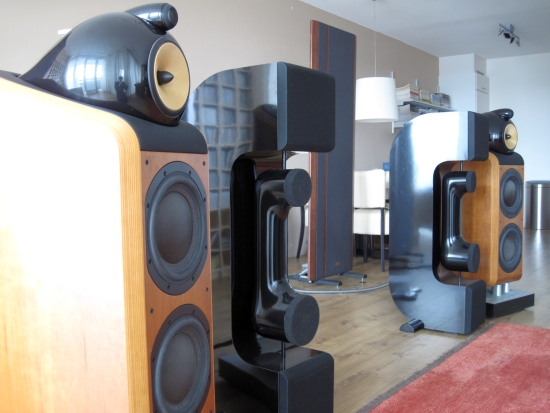
Finally, a quick comparison with the Synthese Floating 2
These odd speakers have a free “floating” midrange and treble enclosure and, apparently, this makes them image very well. Like the 800D’s, they have the ability to image way outside the borders of their enclosures. Their sound is royal, deep, wide and colorful. They have very deep, albeit not very accurate, bass. The entire enclosure is a transmission line for the bass and this makes them sound full and deep and there’s a very relaxed quality to the bass that is absolutely soothing. The matching relaxed midrange and treble make for a sound that reminds of very old IMF/Kef speakers, there’s just no aggression at all. These speakers aren’t nearly as detailed as the 800D’s though and even the N804’s beat them at that, easily. But these funny “phones” demonstrate very clearly where the 800D’s hurt. For me, no matter how accurate they are, they are just too unforgiving. The Syntheses make it easy for you to relax and stay on the couch the entire evening. The 800D’s, by contrast, can make me restless and even annoy me sometimes.
Trying other speaker cables
Shortly after writing this review, I tried a pair of Cardas Golden Reference speaker cables to see if they could ameliorate the 800D’s clinical character. The results are interesting because, as it turns out, these cables sound much warmer than the Transparant XL’s that I normally use and also less focused and rhythmic. This was surprising because I know that the Transparent is also pretty smooth and the Golden Reference is said to be very neutral yet I find it to sound very much like the Golden Cross, which is also forgiving, friendly, smooth and never harsh. In this application, the Golden Reference cable is also a little slow and imprecise in the bass and it lacks a little focus and definition in the midrange. If you have speakers that sound slightly harsh and/or forward, Golden Reference cables might indeed alleviate the problem. But even though the Cardas cables indeed made the 800D’s less critical with bad recordings, they also tend to blur the bass and lessen the apparent detail throughout the entire frequency range. People that have read more reviews on this site know that I don’t actually like a forward/clinical sound, but the Cardas simply just smooths things over rather too much. The treble becomes much more tolerable even with bas recordings but you pay the price with a loss of PRAT and apparent resolution. Perhaps with more forward sounding amplifiers the story would be different, but I don’t think that the Golden Reference cables match the 800D’s particularly well. Nor do my Rowland model 6 amps for that matter, but I’ve had them for a long time and I know them well.
Conclusion
Do I like these speakers? Well, I have immense admiration for them when all circumstances are optimal. That means combining them with forgiving cables and playing only well-recorded CD’s. They have fantastic soundstaging and their bass can be stunning. If I had a second room and no cost restraints then I would probably keep them. But now that I have to choose between them and the Magnepans (or Apogees, as I would later opt for), I simply have to conclude that the Maggies move me more. Not by sheer bass power for sure, but emotionally they do the trick, whereas the 800D’s fail to move me with a sizable part of my CD collection.
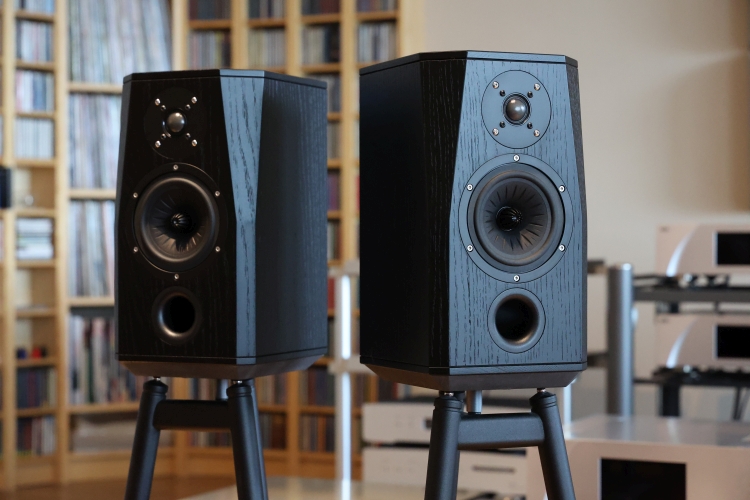
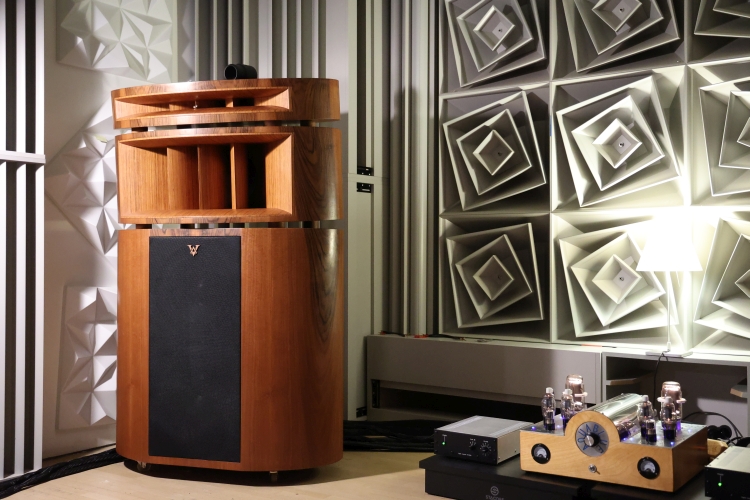
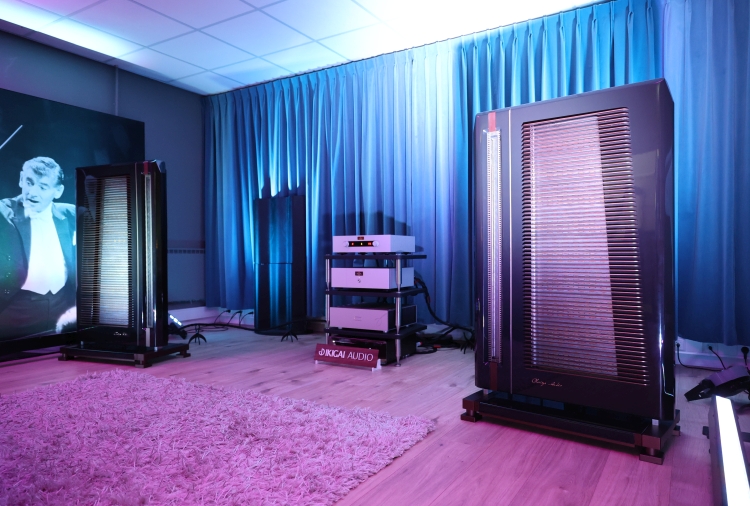
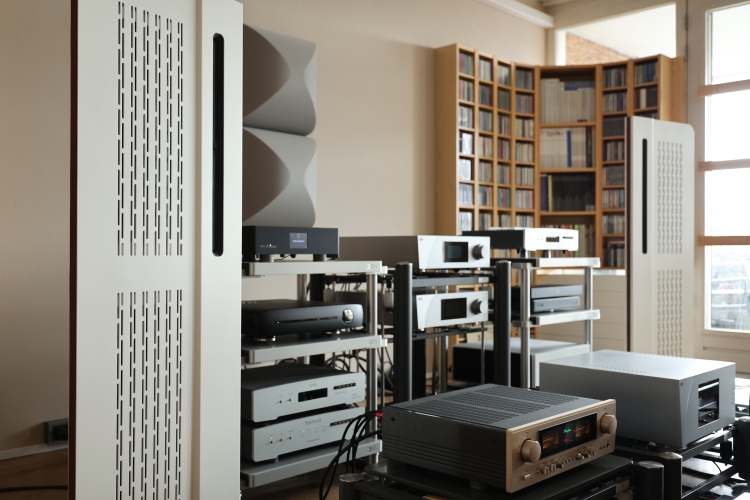
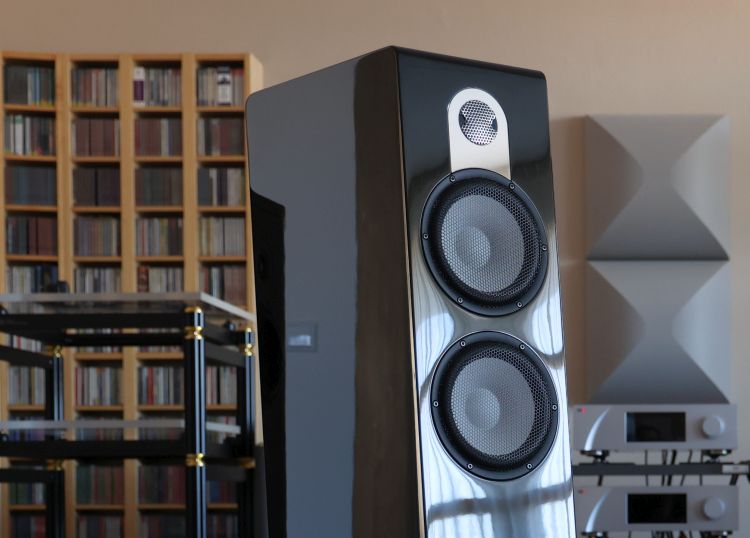
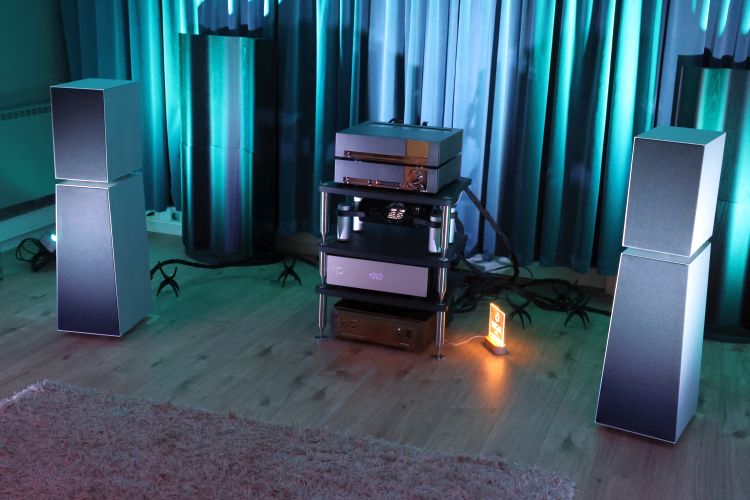
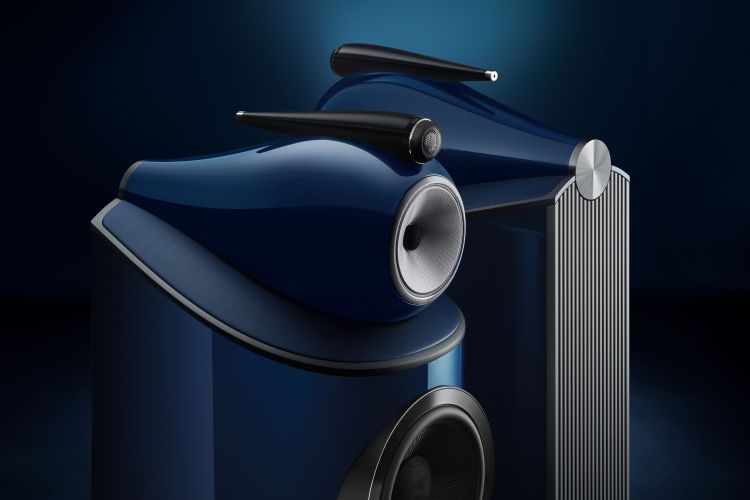
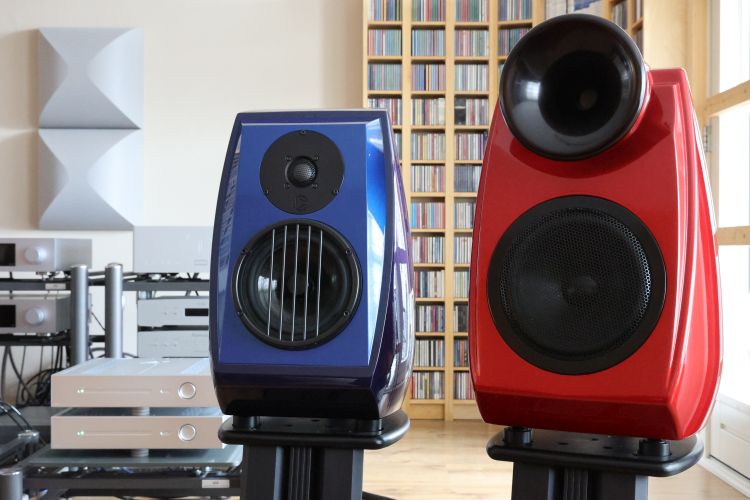
Hi Christiaan, I have read the 801Ds are superior to the 800Ds. Have you ever had an opportunity to listen to them? They seem to be rather rare on the used market.
Also, Happy New Year and thanks for all the outstanding reviews you put out. They really are quite useful and particularly for those of us in the States who might not be aware of some of the excellent Audio gear available in Europe.
Hi Gary, I’ve not heard the 801D’s but I did hear the 801N’s and did not like them much. At moderate levels they sounded shut-in and flat. They only started blossoming when playing very loudly. And that, they did very well. Between the 801N and 800D, I’d choose the 800D but of the 800-series the 802D is perhaps the nicest one I heard. However, this speakers had prodigious bass and needs to be positioned well away from any walls. I’ve not heard any of the later D2 incarnations in a controlled environment.
Hi Christiaan,
After reading your full review of the Jeff Rowland Model 6 monoblocks some time ago I started looking for a pair. I live in Brazil and finally found a pair for sale! They are paired with the BPS6 modules. But before pulling the trigger some questions started to pop. I saw you used them to drive the 800Ds, but is the total power output enough to drive my B&W 802 Nautilus? And do you have any idea on how they compare the the sound of my krell Kav2250?
Thanks for the excellent detailed information you provide in your reviews !
Hi Patrick, the sixes can deliver 35 amps which is considerably more than many competitors can do. However, you should also take into account that they are by now quite old. While neither I nor anyone I know have never had any issues with any model 6 this may be a factor to consider. Also, there is the matter of damping factor and the overall Rowland sound which is very different from the Krell sound. The model 6 is one of the fastest and cleanest sounding of the classic models but it still has refinement and nuance higher on its list than raw slam. For Krell, especially the KAV series, this is the other way around. I don’t think that the KAV2250 will be better at controlling the 802’s technically but it likely does have a tighter and more controlled (more damped) sound. The sixes will be sweeter and more relaxed and they can sound quite magical and emotional so if that is what you are aiming for, go for it.
Hi Patrick, I used to own Nautilus 801 (without „D“) for a couple of years and was quite happy with them. But I also do confirm what Christiaan said, that they only came to full blossom when cranking up the volume more. Low level listening is not so much their territory… The point I suppose they’re hard to find is that they are not easy to sell …what I found out myself. It probably has a lot to do with their stature and the relatively „low Wife Acceptance Factor“ ;-). At some point I lusted after a Wilson W/P7 those days but couldn’t really sell my N801 because there was no request for them (even though they were in great condition) …until I found a private seller in my area who wanted to sell his Wilson Audio Maxx and after a meet up and some nice talk he even took my N801 for a trade in as he said he used to have that one before and knew it well. So I ended up with a „Maxx“ …and I still enjoy it very much. Even though they are even harder to make them shine as they are supposed to… But I‘m there lately